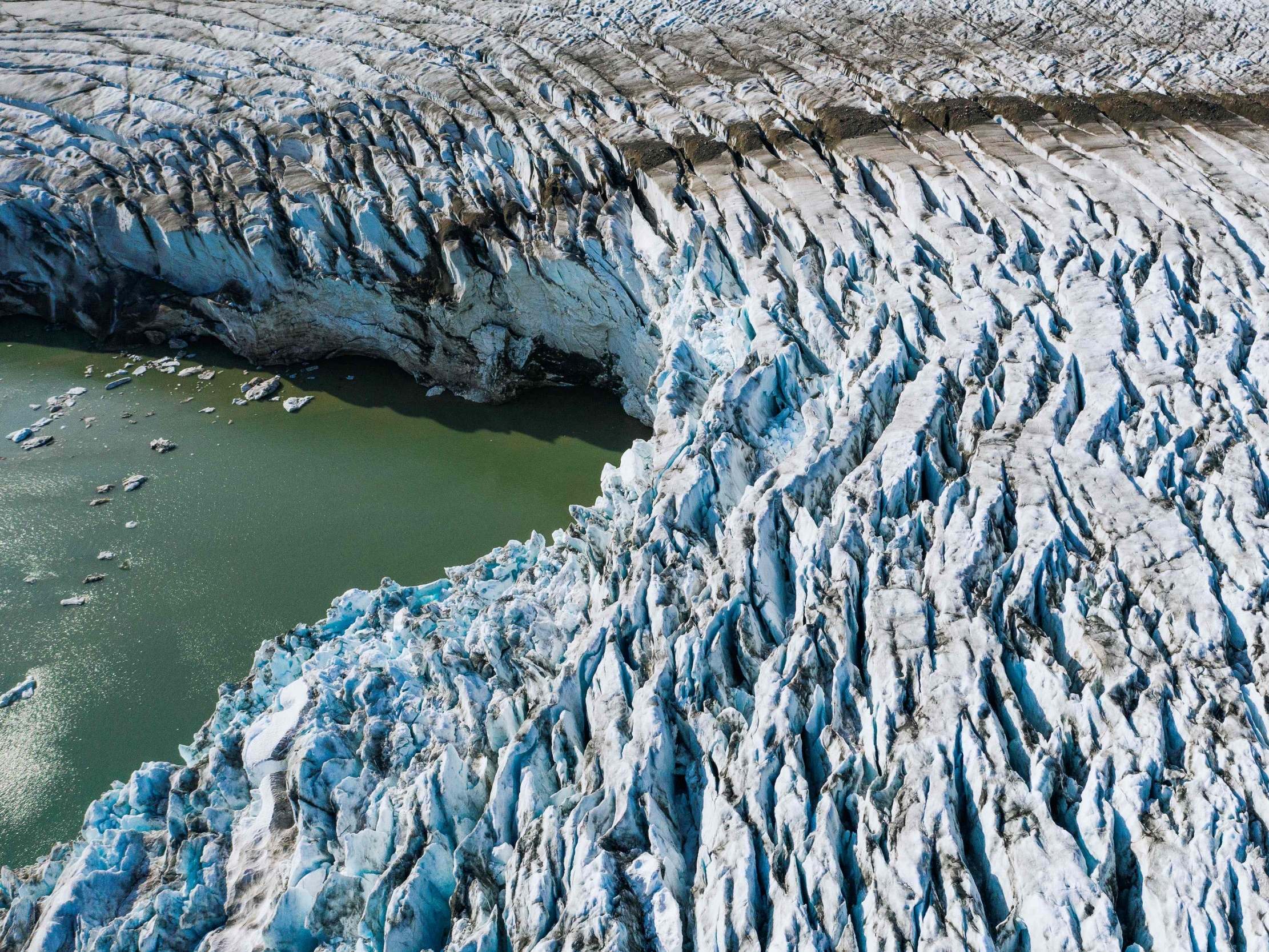Mammoth ice slabs in Greenland could cause sea levels to rise by additional three inches
Vast slabs up to 16 metres thick create an impermeable layer meaning meltwater flows directly into the ocean

Thick, impenetrable “ice slabs” are expanding on the inside of Greenland’s ice sheet and causing vast amounts of meltwater to spill into the ocean, scientists have discovered.
Normally the ice is porous which means it is able to reabsorb meltwater. But new research has revealed that the ice slabs are expanding as the climate warms.
To date, run off from has added less than a millimetre to global sea levels. But by 2100 this could be raised by an additional three inches in a high emission scenario, according to the study published in the journal Nature.
In 2000, Greenland’s runoff zone – the region of ice sheet where runoff contributes to sea level rise – was the size of the US state of New Mexico. Between 2001 and 2013 this region expanded at a pace of two American football pitches every minute.
As the Earth’s temperatures climb, the run off zone is expected to continue to expand.
“Even under moderate climate projections, ice slabs could double the size of the runoff zone by 2100. Under higher emissions scenarios, the runoff zone nearly triples in size,” said lead researcher Mike MacFerrin from the University of Colorado Boulder.
This could contribute to between an extra half inch to three inches of sea-level rise, the study found. This is in addition to other sources of sea-level rise in Greenland such as calving icebergs.
“As the climate continues to warm, these ice slabs will continue to grow and enhance other meltwater feedbacks,” said co-author Mahsa Moussavi, a researcher from the National Snow and Ice Data Center (NSIDC). “It’s a snowball effect: more melting creates more ice slabs, which create more melting, which, creates again more ice slabs.”
Normally meltwater percolates downwards, freezing before it runs off into the sea. However, as Arctic melting becomes more extreme these ice layers expand and solidify into mammoth slabs up to 16 metres thick which creates an impermeable layer just beneath the surface.
Meltwater cannot pass through these shelves so it flows downhill along them until it reaches the ocean.
In July 2012 snow and ice melted from 97 per cent of Greenland’s ice sheet surface, an event not been seen before during the 33-year satellite record, according to data from the NSIDC. This spring, a record-breaking 80 billion tons of Greenland ice melted.
Ice slabs were first discovered in 2012. Scientists have monitored them by driving snowmobiles across southwest Greenland with radars to measure their size.
Understanding Arctic feedbacks like this is crucial to understanding how a warming climate will change vulnerable cities.

“Interestingly, decades ago scientists hypothesised what meltwater in a warming climate could do to Greenland’s snow layers, based on measurements and theory,” said Horst Machguth, a researcher at the University of Fribourg, Switzerland, and second author on the paper. “Our results show that their hypotheses were close to what is playing out in Greenland today.”
The amount of emissions released from human activity will determine how much these slabs contribute to sea level rise – it could be anything from a couple of millimetres to a few inches.
“Humans have a choice about which way this goes,” Dr MacFerrin said.
Join our commenting forum
Join thought-provoking conversations, follow other Independent readers and see their replies
Comments
Bookmark popover
Removed from bookmarks